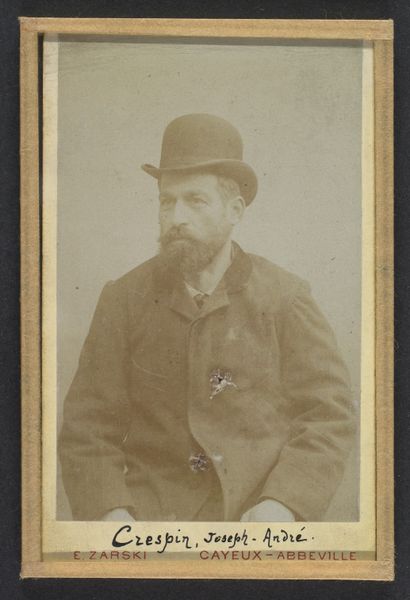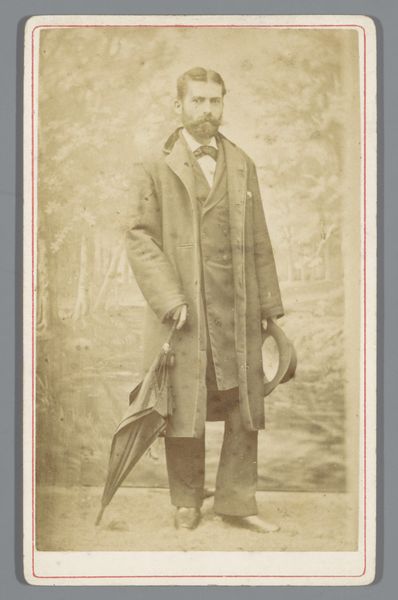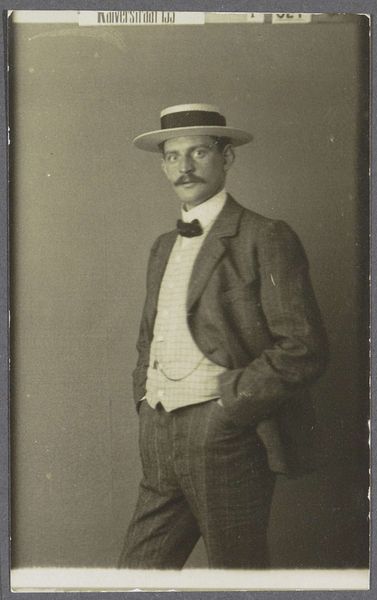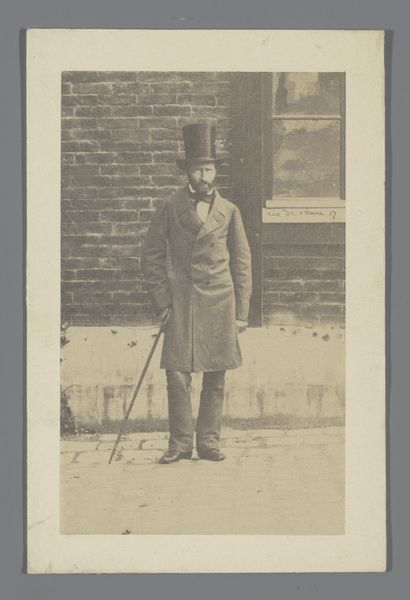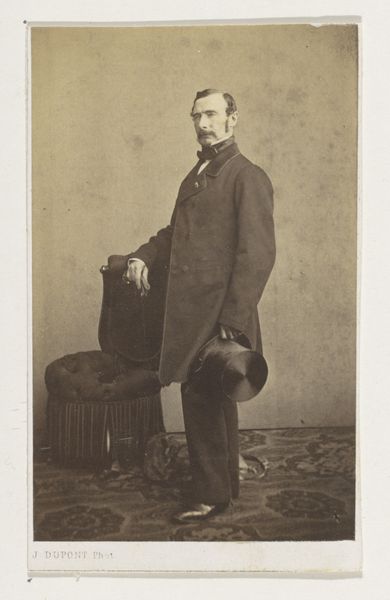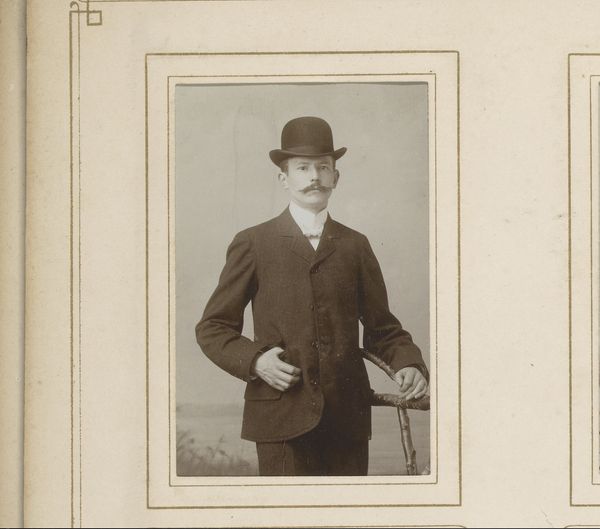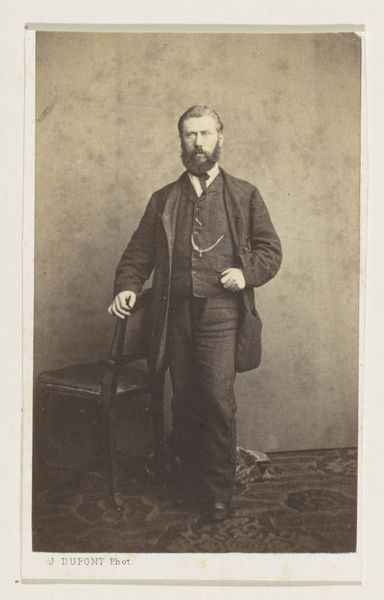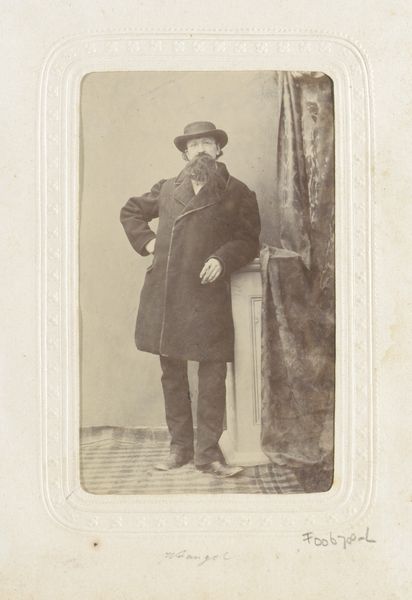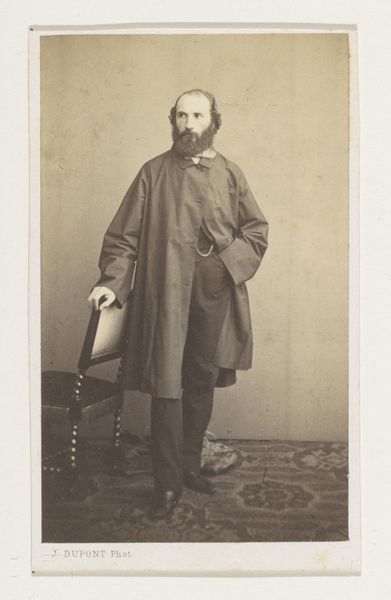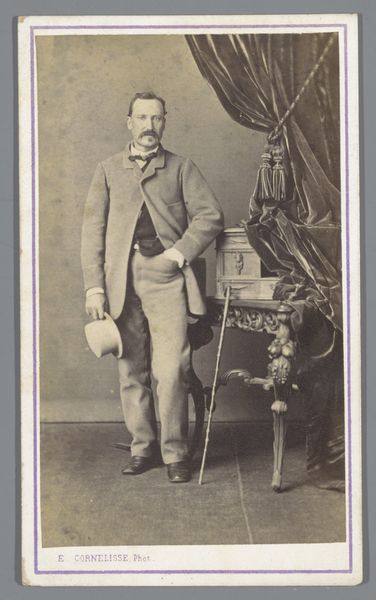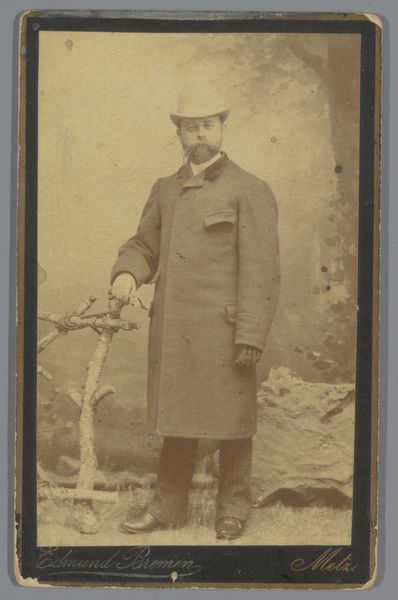
drawing, lithograph, print, paper, chalk, charcoal
#
portrait
#
drawing
#
lithograph
# print
#
paper
#
plant
#
chalk
#
portrait drawing
#
charcoal
#
portrait art
Dimensions: 399 × 311 mm
Copyright: Public Domain
Editor: Here we have Henri Fantin-Latour’s "Portrait of Édouard Manet," created between 1867 and 1880. It’s a lithograph, a print, made from chalk, charcoal, and other drawing materials on paper. The texture achieved with the lithography is just amazing, with such attention to rendering fabric and skin, but in muted tones. What stands out to you in terms of the composition? Curator: The first thing that strikes me is the deliberate distribution of value. Notice how the artist manipulates light and shadow to create depth. The tonal gradations across Manet’s coat, for instance, serve to sculpt the form, defining its volume and texture through purely formal means. Editor: Yes, the way the light catches the lapel is brilliant! What do you make of Manet’s pose? Curator: Consider the implications of that diagonal. Manet's posture, leaning slightly into the picture plane, introduces a dynamism, fracturing the static quality often associated with portraiture. Do you see how this oblique angle establishes not only a spatial relationship, but a kind of psychological one, too? Editor: It definitely keeps the eye moving! So, it's not just about what is depicted but how it’s depicted that conveys meaning. Curator: Precisely! Consider the texture of the lines – dense and controlled in areas requiring definition, lighter and sketchier where form recedes. Editor: I hadn’t considered how much the variations in the mark-making contribute to the overall effect. It makes the piece feel so much more alive! Thanks for your insights. Curator: My pleasure. It is through careful scrutiny of these formal relationships that we unlock a deeper understanding.
Comments
No comments
Be the first to comment and join the conversation on the ultimate creative platform.
